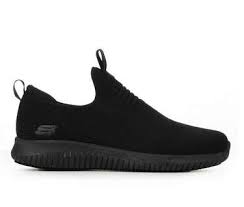The Importance of Non-Slip Shoes in the Workplace
When it comes to safety in the workplace, one often overlooked aspect is the type of footwear employees wear. Non-slip shoes are a crucial piece of protective gear that can prevent accidents and injuries in various industries, especially those where floors may be wet or slippery.
Non-slip shoes, also known as slip-resistant shoes, are specially designed to provide traction and grip on slick surfaces. Whether it’s a restaurant kitchen, a hospital ward, or a construction site, wearing non-slip shoes can significantly reduce the risk of slips, trips, and falls.
One of the key features of non-slip shoes is their outsole design. These shoes typically have rubber outsoles with tread patterns that help channel liquids away from the sole and create friction with the ground. This design prevents slipping and provides stability even on oily or wet surfaces.
Employers have a responsibility to ensure a safe working environment for their employees, and providing non-slip shoes is an essential part of that commitment. By investing in quality slip-resistant footwear, businesses can protect their workers from potential accidents and minimize the risk of workplace injuries.
For employees, wearing non-slip shoes not only enhances safety but also improves comfort and productivity. Knowing that they have proper footwear that reduces the likelihood of accidents can boost confidence and morale in the workplace.
In conclusion, non-slip shoes play a vital role in maintaining workplace safety and preventing injuries caused by slips and falls. Whether you work in food service, healthcare, hospitality, or any other industry where slippery floors are a concern, investing in non-slip footwear is a smart decision that benefits both employers and employees alike.
6 Essential Tips for Choosing and Maintaining Non-Slip Shoes
- Choose shoes with slip-resistant soles for better traction.
- Ensure a proper fit to prevent slipping and discomfort.
- Look for shoes with water-resistant materials to maintain grip in wet conditions.
- Regularly clean the soles of your non-slip shoes to remove debris that could affect traction.
- Rotate between multiple pairs of non-slip shoes to prolong their lifespan.
- Consider replacing your non-slip shoes when the treads wear down to maintain effectiveness.
Choose shoes with slip-resistant soles for better traction.
When selecting footwear for work or everyday use, opt for shoes with slip-resistant soles to enhance traction and stability. Slip-resistant soles are specifically designed to provide better grip on slippery surfaces, reducing the risk of accidents caused by slips and falls. By choosing shoes with this feature, you can move confidently and safely across various terrains, ensuring your safety and well-being in different environments.
Ensure a proper fit to prevent slipping and discomfort.
To maximize the effectiveness of non-slip shoes, it is essential to ensure a proper fit. A well-fitted pair not only prevents slipping on hazardous surfaces but also minimizes discomfort and fatigue during long hours of wear. Properly fitting non-slip shoes provide stability and support, allowing the wearer to move confidently and securely in any work environment. By taking the time to find the right size and style that suits your feet, you can enhance both safety and comfort while on the job.
Look for shoes with water-resistant materials to maintain grip in wet conditions.
When selecting non-slip shoes, it is essential to prioritize those made with water-resistant materials to ensure optimal grip in wet conditions. Water-resistant shoes help maintain traction on slippery surfaces by repelling moisture and preventing it from seeping into the shoe. This feature not only enhances the shoe’s durability but also ensures that the slip-resistant properties remain effective even when exposed to water or other liquids. By choosing non-slip shoes with water-resistant materials, individuals can confidently navigate wet environments with reduced risk of slips and falls.
Regularly clean the soles of your non-slip shoes to remove debris that could affect traction.
Regularly cleaning the soles of your non-slip shoes is a simple yet effective tip to maintain their traction and slip-resistant properties. By removing debris such as dirt, grime, or food particles from the soles, you ensure that the tread patterns remain clear and functional. This proactive maintenance not only helps to maximize the grip of your non-slip shoes on various surfaces but also extends their lifespan, allowing you to stay safe and comfortable in the workplace for longer periods.
Rotate between multiple pairs of non-slip shoes to prolong their lifespan.
To prolong the lifespan of your non-slip shoes, consider rotating between multiple pairs. By alternating between different pairs of non-slip shoes, you allow each pair to dry out completely between uses, reducing wear and tear on the materials. This practice not only extends the longevity of your footwear but also ensures that you always have a fresh and reliable pair of non-slip shoes ready for use in any work environment.
Consider replacing your non-slip shoes when the treads wear down to maintain effectiveness.
It is essential to regularly inspect and replace your non-slip shoes when the treads wear down to ensure their effectiveness in preventing slips and falls. As the tread patterns on the outsoles wear out, the shoes lose their grip on slippery surfaces, increasing the risk of accidents. By proactively replacing worn-out non-slip shoes, you can maintain optimal traction and safety in the workplace, protecting yourself from potential injuries caused by inadequate footwear.

